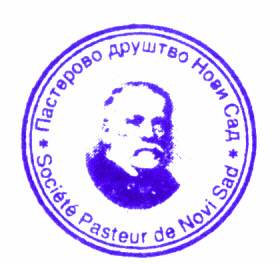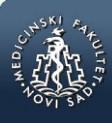md-medicaldata
Main menu:
- Naslovna/Home
- Arhiva/Archive
- Godina 2024, Broj 1
- Godina 2023, Broj 3
- Godina 2023, Broj 1-2
- Godina 2022, Broj 3
- Godina 2022, Broj 1-2
- Godina 2021, Broj 3-4
- Godina 2021, Broj 2
- Godina 2021, Broj 1
- Godina 2020, Broj 4
- Godina 2020, Broj 3
- Godina 2020, Broj 2
- Godina 2020, Broj 1
- Godina 2019, Broj 3
- Godina 2019, Broj 2
- Godina 2019, Broj 1
- Godina 2018, Broj 4
- Godina 2018, Broj 3
- Godina 2018, Broj 2
- Godina 2018, Broj 1
- Godina 2017, Broj 4
- Godina 2017, Broj 3
- Godina 2017, Broj 2
- Godina 2017, Broj 1
- Godina 2016, Broj 4
- Godina 2016, Broj 3
- Godina 2016, Broj 2
- Godina 2016, Broj 1
- Godina 2015, Broj 4
- Godina 2015, Broj 3
- Godina 2015, Broj 2
- Godina 2015, Broj 1
- Godina 2014, Broj 4
- Godina 2014, Broj 3
- Godina 2014, Broj 2
- Godina 2014, Broj 1
- Godina 2013, Broj 4
- Godina 2013, Broj 3
- Godina 2013, Broj 2
- Godina 2013, Broj 1
- Godina 2012, Broj 4
- Godina 2012, Broj 3
- Godina 2012, Broj 2
- Godina 2012, Broj 1
- Godina 2011, Broj 4
- Godina 2011, Broj 3
- Godina 2011, Broj 2
- Godina 2011, Broj 1
- Godina 2010, Broj 4
- Godina 2010, Broj 3
- Godina 2010, Broj 2
- Godina 2010, Broj 1
- Godina 2009, Broj 4
- Godina 2009, Broj 3
- Godina 2009, Broj 2
- Godina 2009, Broj 1
- Supplement
- Galerija/Gallery
- Dešavanja/Events
- Uputstva/Instructions
- Redakcija/Redaction
- Izdavač/Publisher
- Pretplata /Subscriptions
- Saradnja/Cooperation
- Vesti/News
- Kontakt/Contact
 Pasterovo društvo
Pasterovo društvo
- Disclosure of Potential Conflicts of Interest
- WorldMedical Association Declaration of Helsinki Ethical Principles for Medical Research Involving Human Subjects
- Committee on publication Ethics
CIP - Каталогизација у публикацији
Народна библиотека Србије, Београд
61
MD : Medical Data : medicinska revija = medical review / glavni i odgovorni urednik Dušan Lalošević. - Vol. 1, no. 1 (2009)- . - Zemun : Udruženje za kulturu povezivanja Most Art Jugoslavija ; Novi Sad : Pasterovo društvo, 2009- (Beograd : Scripta Internacional). - 30 cm
Dostupno i na: http://www.md-medicaldata.com. - Tri puta godišnje.
ISSN 1821-1585 = MD. Medical Data
COBISS.SR-ID 158558988
AKUTNA KRVARENJA IZ GORNJIH PARTIJA GASTINTESTINALNOG TRAKTA - ISKUSTVA URGENTNOG CENTRA KLINIČKOG CENTRA VOJVODINE
ACUTE BLEEDING FROM THE UPPER GASTROINTESTINAL TRACT - EXPERIENCE OF EMERGENCY CENTER, CLINICAL CENTER OF VOJVODINA
Authors
Predrag Petrović 1, Ivanka Perčić1, Aleksandar Knežević1, Rada Tešić1, Bojan Vuković1, Danka Petrović2
1Urgentni centar, Odeljenje urgentne interne medicine Klinički centar Vojvodine
2Centar za radiologiju Klinički centar Vojvodine
The paper was received on: 01.02.2017./ Accepted on 20.02.2017.
Correspondence to
Predrag Petrović
Doža Đerđa 2, 21000 Novi Sad,
lekar specijalista interne medicine- gastroenterologije i hepatologije.
tel. 064/2615784
e-mail: ppetrovicnovisad@gmail.com
Abstract
Introduction: Despite the increasing knowledge on the etiology and treatment of bleeding from the upper gastrointestinal tract (GPGIT) as well as the development of endoscopic surgery to stop the bleeding number of hospitalizations and mortality did not decrease. A possible explanation is all the more massive use of antiplatelet, anticoagulant and non-steroidal anti-inflammatory drugs, or the aging of the population. Materials and Methods: This paper presents an analysis of 266 patients who were admitted to UC KCV in the period from 01.01.2013 to 30.06.2013 g. Everyone made an urgent EGDS. The study was retrospective. Results: Of 266 male patients was 176 and the female 89. In relation to the half there was a statistically significant difference.After emergency EGDS non-variceal bleeding had 239 (89.8%) and variceal 27 (10.2%). No there statistically significant difference between the two groups as far as the age and sex distribution. Patients with bleeding non-variceal were markedly more likely to have melena (p = 0.001) and were more likely to use NSAIDs and ASA (p = 0.023; p = 0.002). Also this group of patients was statistically significantly more frequently had a previous ulcer disease (p = 0.010) and cardiovascular disease (p = 0.036). Patients with variceal bleeding significantly more likely to consume alcohol (p = 0.000) and had anemia with hemoglobin values of 60 -90 g / l (p = 0.001), and thrombocytopenia (0.000) and prolonged PT (0,000). Patients with bleeding non-variceal significantly more often were presented with acute renal failure (p = 0.001). Conclusion: Acute bleeding from GPGIT are one of the most urgent conditions in medicine. An increasing number of patients with bleeding from GPGIT which is explained by the increasing use of antiplatelet, anticoagulant and non-steroidal anti-inflammatory drugs. Timely diagnosis (urgent EGDS) and treatment reduces the mortality of these bolsnika.
Key words
Upper gastrointestinal bleeding; Urgent endoscopay; Antiplatelet therapy; non-steroidal anti-inflammatory drugs.
Sažetak
Uvod: I pored sve većeg znanja o etiologiji i načinu lečenja krvarenja iz gornjih partija gastrointestinalnog trakta (GPGIT) kao i razvoju endoskopskih tehnika zaustavljanja krvarenja broj hospitalizacija i smrtnost nisu se smanjili. Moguće objašnjenje je sve masovnija upotreba antiagregacionih, antikoagulantnih i nesteroidnih antiinflamatornih lekova ali i starenje populacije. Materijal i metode: Ovaj rad predstavlja analizu 266 bolesnika koji su primljeni u UC KCV u periodu od 01.01.2013 do 30.06.2013 g. Svima je načinjena urgentna EGDS. Studija je bila retrospektivna. Rezultati: Od 266 bolesnika muškog pola je bilo 176 a ženskog 89. U odnosu na pol postoji statistički značajna razlika. Nakon urgentne EGDS nevaricealno krvarenje je imalo 239 (89,8%) a varicealno 27 (10,2%). Nie postojala statitički značaja razlika između ove dve grupe što se tiče starosne i polne strukture. Bolesnici sa nevaricealnim krvarenjem su značano češće imali melene (p=0,001) i češće su upotrebljavali NSAIL i ASA (p= 0,023; p= 0,002). Takođe ova grupa bolesnika je statistički značajno češće imali predhodnu ulkusnu bolest (p= 0,010) i bolesti KVS (p=0,036). Bolesnici sa varicealnim krvarenjem statistički značajno češće konzumirali alkohol (p= 0,000) i imali su anemiju sa vrednostima Hgb od 60 -90 g/l ( p= 0,001) i trombocitopeniju (0,000) kao i produžen PT ( 0,000). Bolesnici sa nevaricealnim krvarenjem statistički značajno češće su se prezentovali sa akutnom bubrežnom insuficijencijom (p= 0,001). Zaključak: Akutna krvarenja iz GPGIT predstavljaju jedno od najurgentnijih stanja u medicini. Sve je veći broj bolesnika sa krvarenjem iz GPGIT što se objašnjava sve većom upotrebom antiagregacione, antikoagulantne i nesteroidnih antiinflamatornih lekova. Pravovremena dijagnostika (urgentna EGDS) i lečenje smanjuje mortalitet ovih bolesnika.
Ključne reči
Krvarenje iz gornjih partija gastrointestinalnog trakta, urgentna ezofagogastroduodenoskopija, antiagregaciona terapija, nesteroidni antiinflamatorni lekovi.
References
- Hadnađev Lj. Krvarenja iz gastrointestinalnog trakta. U : Pejin D. ed; Interna medicina III, Medicinski fakultet Novi Sad; 2006; 1849-1866.
- Jukić M i sar. Intenzivna medicina, Medicinska naklada Zagreb; 2008.
- Brullet E, Calvet X, Carupo R, et al. Factors predicting failure of endoscopic injection therapy in bleeding duodenal ulcer. Gastrointest Endosc 1996;43:111-16.
- Brullet E, Carrupo R, Calvet X, et al. Factors related to the failure of endoscopic injection therapy for bleeding gastric ulcre. Gut 1996;39: 155-8.
- Cooper GS,Chak A,Way LE,Hammar PJ, Harper DL,Rosenthal GE. Early endoscopy in upper gastrointestinal haemorrhage:associations with recurent bleeding,surgery, and lenght of hospital stay. Gastrointest Endosc 1999;49: 145-52.
- Marshall JK, Collins SM, Gafni A.Prediction of resource utilisation and case cost for acute nonvariceal upper gastrointestinal haemorrhage at a Canadian community hospital. Am J Gastroenterol.1999; 94:1841-6.
- Sang J. Current menagement of peptic ulcer bleeding. Nac Clin Pract Gastroenerol Hepatol 2006; 3(1): 24-32
- Bleau BL,Gostout CJ,Sherman KE,Shaw MJ,Harford WV,Keate RF, et al. Recurrent bleeding from peptic ulcer associated with adherent clot a randomized study comparing endoscopic treatment with medical therapy. Gastrointest Endosc 2002;56:1-6.
- 9.Buffoli F, Graffeo M, Nicosia F, Gentile C, Cesari P, Rolfi F, et al. Peptic ulcer bleeding comparison of two hemostatic procedures. Am J Gastroenterol 2001;96:89-94.
- Lai KH,Peng SN, Guo WS,Lee FY,Chang FY,Malik U, et al. Endoscopic injection for the treatment of bleeding ulcers: local tamponade or drug effect? Endoscopy 1994; 26:338-41
- Laine L, Estrada R. Randomized trial of normal saline solution injection versus bipolar electrocoagulation for treatment of patients with high-risk bleeding ulcers: is local tamponade enough? Gastrointest Endosc 2002;55:6-10
- Chung SCS,Lau JYW,Sung JJY, et al. A randomized comparasion between adrenaline injection alone and adrenalin injection plus heat probe treatment for actively bleeding peptic ulcers. BMJ 1997;314: 1307-11.
- Chau CH,Siu WT,Lav BK Tang CN, Kwok SY, Luk YW, et al. Randomized controlled trial comparing epinephrine injection plus heat probe coagulation versus epinephrine injection plus argon plasma coagulation for bleeding peptic ulcers. Gastrointest Endosc 2003; 57: 455-61.
- Ginsberg GG, Barkun AN, Bosco JJ, Burdick JS, Isenberg GA, Nakao NL, et al. The argon plasma coagulator: February 2002. Gastrointest Endosc 2002;55:807-10.
- van Leerdan ME. Epidemiology of acute gastrointestinal bleeding. Best Pract Res Clin Gastroenterology 2008; 22:209-24.
- Hreinson JP, Kalaitzakis E, Gudmundsson S, Bjornsson ES. Upper gastrointestinal bleeding: incidence, etiology and outcomes in a population- based setting. Scand J Gastroenterol 2013;48: 439-47.
- Hearnshaw SA, Logan RF, Lowe D, Travis SP, Murphy MF, Palmer KR. Acute upper gastrointestinal bleeding in the UK: pacient characteristic, diagnoses and outcomes in the 2007 UK adult. Gut 2011;60:1327-35.
- Laine L, Yang H, Chang SC, Datto C. Trends for incidence of hospitalization and death due to GI complications in the United States from 2001 to 2009. Am J Gastroenterol 2012;107:1190-5.
- Mohamad J. Kaviani, Mohsen Pirastehfar, Ali Azari, Mehdi Saberifiroozi. Etiology and outcome of pacients with upper gastrointestinal bleeding: A study from South of Iran. The Saudi J of Gastroenterol 2010; 16: 253-59.
UDK: 616.32/.34-055.1-083.98
COBISS.SR-ID 230573836
PDF Petrović P. et al. • MD-Medical Data 2017;9(1): 045-049
 Medicinski fakultet
Medicinski fakultet